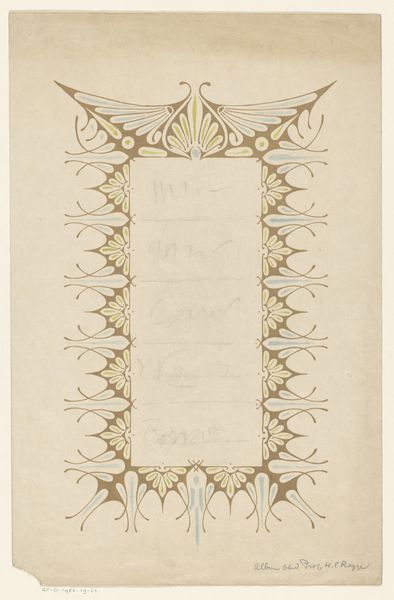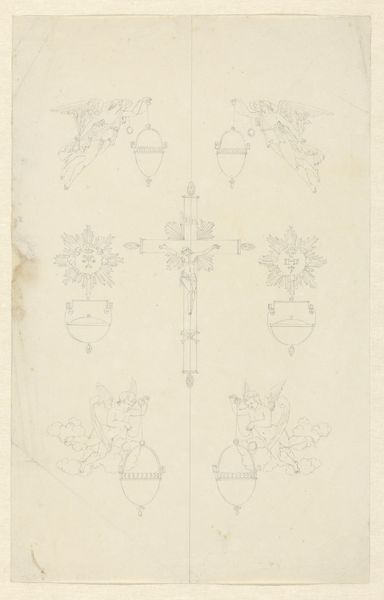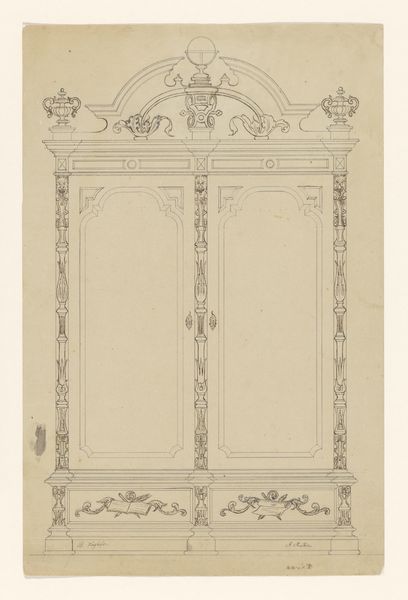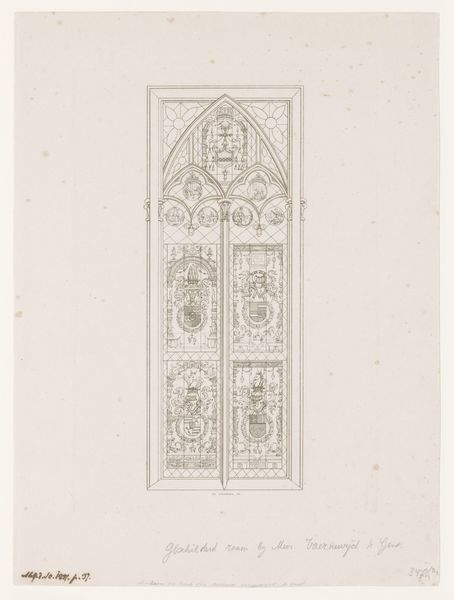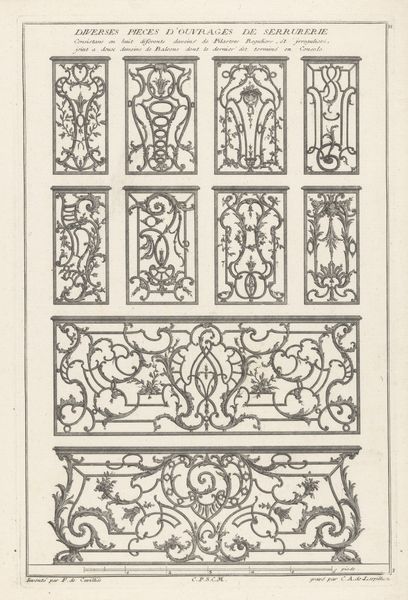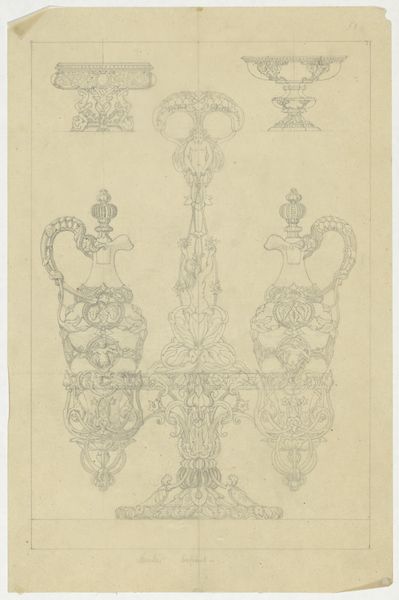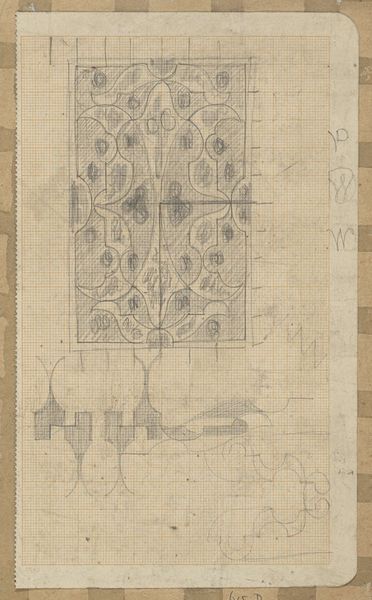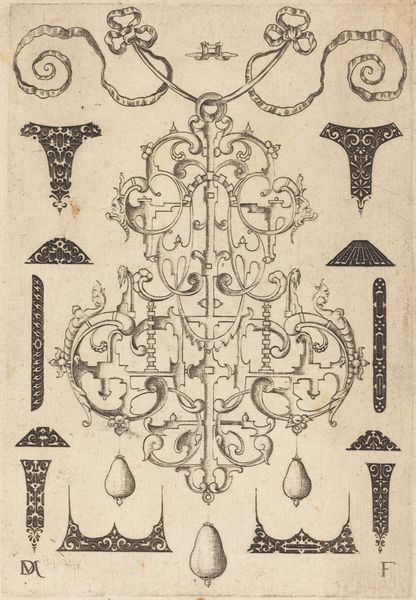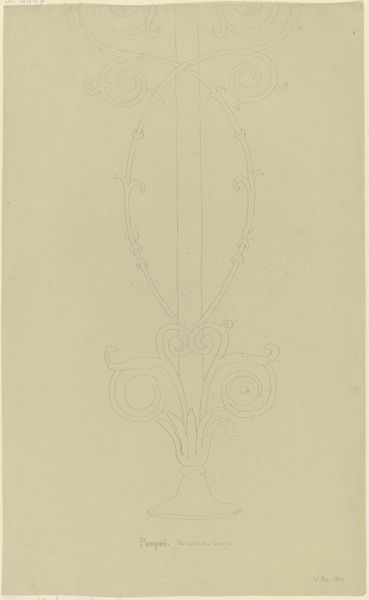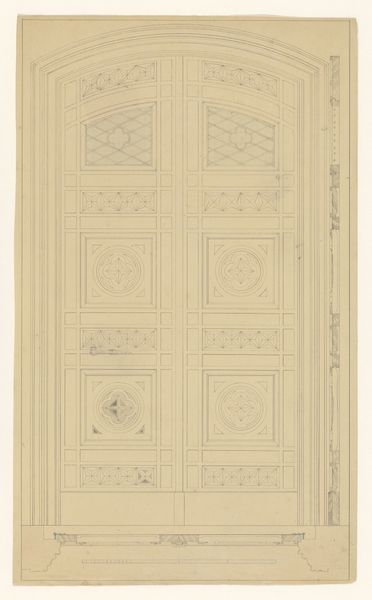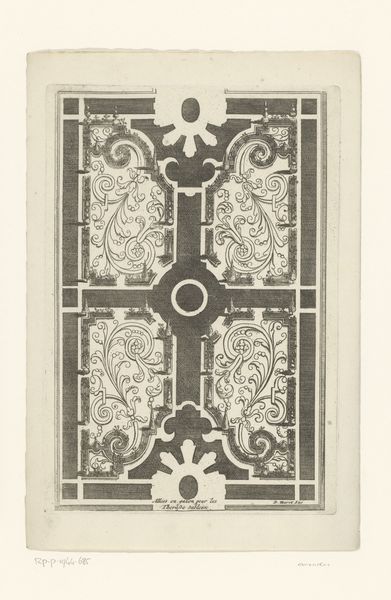
Handtekeningenblad ter gelegenheid van het vijfentwintigjarig jubileum van de N.V. Philips Gloeilampenfabrieken 1916
0:00
0:00
careladolphlioncachet
Rijksmuseum
drawing, graphic-art, print, ink, poster
#
drawing
#
graphic-art
#
aged paper
#
toned paper
#
art-nouveau
#
ink paper printed
# print
#
old engraving style
#
ink
#
geometric
#
pattern repetition
#
poster
Dimensions: height 472 mm, width 310 mm
Copyright: Rijks Museum: Open Domain
Editor: Here we have Carel Adolph Lion Cachet's 1916 print, "Handtekeningenblad ter gelegenheid van het vijfentwintigjarig jubileum van de N.V. Philips Gloeilampenfabrieken"—a commemorative sheet for the 25th anniversary of Philips. It is created using ink and looks almost like it's on aged parchment. The repetitive bulb designs give it a distinctive, industrial feel. What do you see in this piece? Curator: It’s fascinating how this celebratory sheet uses Art Nouveau to frame corporate identity. Notice how the ornamental style, typically associated with nature and individuality, is employed to promote a major industrial player. Consider the context: 1916, amidst the First World War, Philips was rapidly expanding. This print speaks to the evolving relationship between industry, art, and propaganda, suggesting how corporate entities were beginning to harness aesthetic movements to cultivate a desirable image. How might the choice of Art Nouveau, with its connotations of luxury and progress, have resonated with its intended audience during that period? Editor: That's a great point about the potential audience. I hadn't considered it within the wartime context. Was it meant to signal that Philips represented hope and innovation despite the war, or perhaps something else? Curator: Precisely! It’s crucial to dissect whose narratives are being amplified. Was this a self-congratulatory pat on the back for Philips, or was it subtly shaping public perception of the company's role in a changing world? How might workers have perceived this decorative print versus the company's executives? Considering class dynamics and power structures helps us reveal the hidden complexities behind seemingly innocuous celebratory art. Editor: That's fascinating; thinking about those layers really changes how I see the piece. Curator: Exactly, interrogating these power dynamics can show us how seemingly decorative or celebratory objects really contributed to broader socio-political conversations.
Comments
No comments
Be the first to comment and join the conversation on the ultimate creative platform.
